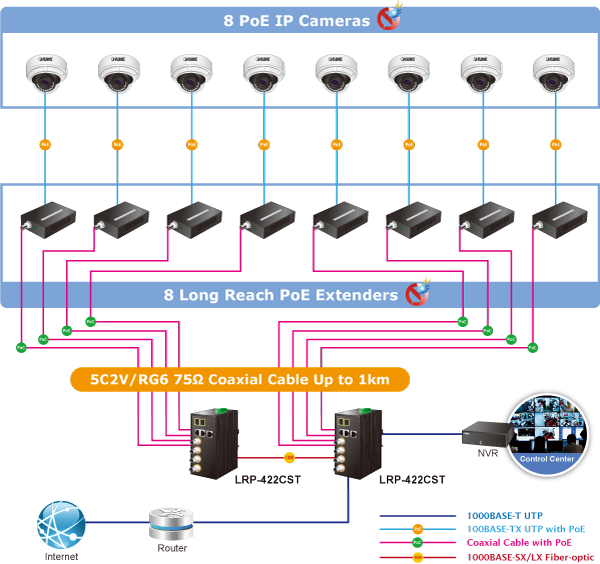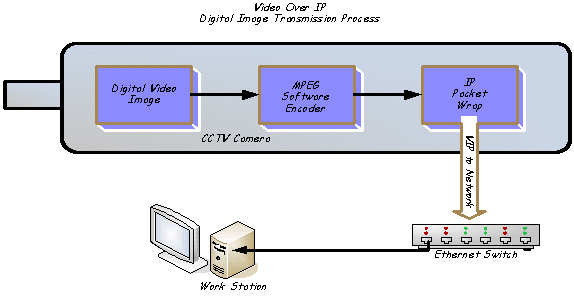Just How CCTV Cameras With Fiber Optic Outcome Enhance Long-Distance Monitoring
CCTV video cameras geared up with fiber optic outcome stand for a considerable improvement in long-distance monitoring technology, providing unmatched benefits over conventional systems. By leveraging the residential or commercial properties of light transmission through fiber optics, these electronic cameras make sure high-definition video quality remains intact across considerable distances while properly alleviating electromagnetic disturbance - cctv fibre optic cable.

Understanding Fiber Optic Technology
Fiber optic technology is significantly used in long-distance tracking applications due to its remarkable ability for information transmission. This innovation utilizes slim strands of glass or plastic fibers to send information as light signals, substantially minimizing the attenuation generally linked with standard copper cable televisions. The fundamental residential or commercial properties of fiber optics allow for the transmission of big volumes of information over significant distances without loss of top quality, making it an optimal choice for applications calling for reputable interaction.
The concept of total interior reflection assists in the efficient transmission of light within the fiber, making certain high data transfer and rate. Unlike electrical signals in steel cable televisions, optical fiber are immune to electro-magnetic interference, enhancing the stability of data transmission. This particular is particularly useful in environments with high levels of electric noise, such as commercial settings or city locations.
Additionally, fiber optic cables are lighter and a lot more flexible than their copper counterparts, which streamlines installation and minimizes structural tons. With their toughness and resistance to environmental factors, optical fiber are well-suited for outside applications, therefore extending the reach of checking systems. Therefore, fiber optic innovation is coming to be a keystone in modern monitoring options, effectively attending to the obstacles of long-distance surveillance.
Advantages of Fiber Optic CCTV
Utilizing fiber optic modern technology in CCTV systems offers various advantages that improve monitoring capacities. Among the key advantages is the capacity to send high-def video over long ranges without substantial signal destruction. Unlike traditional copper cable televisions, fiber optics can maintain video quality over comprehensive runs, making them excellent for large buildings or remote surveillance areas.
In addition, fiber optic wires are much less prone to electromagnetic interference, which can misshape signals in standard systems. This guarantees more clear images and continuous service, critical for safety and security monitoring. Fiber optics are inherently more safe and secure, as obstructing signals requires customized devices, thus giving an additional layer of protection versus unauthorized access.
The light-weight and portable nature of fiber optic cables likewise streamlines setup, allowing simpler transmitting with limited areas and reducing total labor costs. Their durability makes them immune to environmental variables such as moisture and temperature level fluctuations, expanding the lifespan of the security system.
Lastly, fiber optic systems can sustain a greater number of cams on a single network, enhancing sources and supplying scalability for future growth. These advantages make fiber optic CCTV systems an exceptional selection hop over to these guys for contemporary security needs.
Contrast With Typical Solutions
When contrasting CCTV systems, traditional configurations often fall short in numerous essential locations, particularly in terms of range and signal integrity. Traditional coax systems generally deal with substantial signal degradation over fars away, restricting reliable monitoring ranges to around 300 feet (cctv fibre optic cable). Yet threshold, picture clearness lessens, leading to prospective dead spots and lowered surveillance efficiency
In comparison, fiber optic systems keep signal honesty over much greater distances, typically going beyond numerous miles without loss of quality. This is mostly as a result of their capacity to send information as light signals, which are much less vulnerable to electromagnetic interference than electric signals used in conventional systems.
Furthermore, conventional systems need much more comprehensive upkeep and troubleshooting because of their susceptability to ecological factors such as moisture and electromagnetic noise. Fiber optic systems, conversely, offer boosted Discover More resilience and lower maintenance costs, as they are less vulnerable to damages.
Applications in Long-Distance Surveillance
The benefits of contemporary CCTV systems in keeping signal honesty over fars away open a variety of applications for long-distance surveillance. One substantial application remains in metropolitan surveillance, where towns deploy fiber optic CCTV systems to check public rooms, boosting security and discouraging criminal activity. These systems provide continual, top quality video clip feeds that are crucial for reliable police and emergency feedback.
An additional crucial application is in industrial setups, where remote tracking of producing processes and hazardous areas is crucial. Fiber optic CCTV can hold up against rough atmospheres and transmit information over long distances without loss of high quality, allowing for real-time oversight and decreasing threats to workers.
Furthermore, critical infrastructure such as airport terminals, railways, and pipelines profit from long-distance CCTV monitoring. Safety and security groups can look after large areas from systematized control rooms, making sure quick response to any type of cases.
Moreover, in farming setups, farmers use long-distance CCTV to check plants and livestock, helping to enhance productivity and protection. On the whole, the convenience and dependability of fiber optic CCTV systems make them crucial across different industries, allowing extensive surveillance remedies customized to specific needs.
Future Trends in Surveillance Modern Technology
How will improvements in innovation reshape the landscape of security? The future of surveillance technology is poised for significant transformation, driven by innovations such as expert system (AI), artificial intelligence, and side computing. These innovations allow real-time data analysis, enabling quick recognition of potential threats and boosted situational recognition.
AI-powered analytics will improve the precision of facial acknowledgment systems, decreasing false positives and enabling more reliable monitoring of individuals. In addition, the assimilation of Web of Points (IoT) gadgets will promote a smooth network of interconnected surveillance systems, boosting tracking capabilities throughout huge locations.
One more pattern is the change in the direction of cloud-based storage remedies, which provide scalable data administration and availability. This will enable companies to keep substantial amounts of video clip data without the limitations of physical storage space, while ensuring that he has a good point details is quickly retrievable.

Final Thought
In final thought, CCTV video cameras geared up with fiber optic outcome stand for a considerable improvement in long-distance monitoring capacities. As surveillance modern technology proceeds to evolve, the adoption of fiber optic solutions will likely play a pivotal role in boosting security across diverse applications.